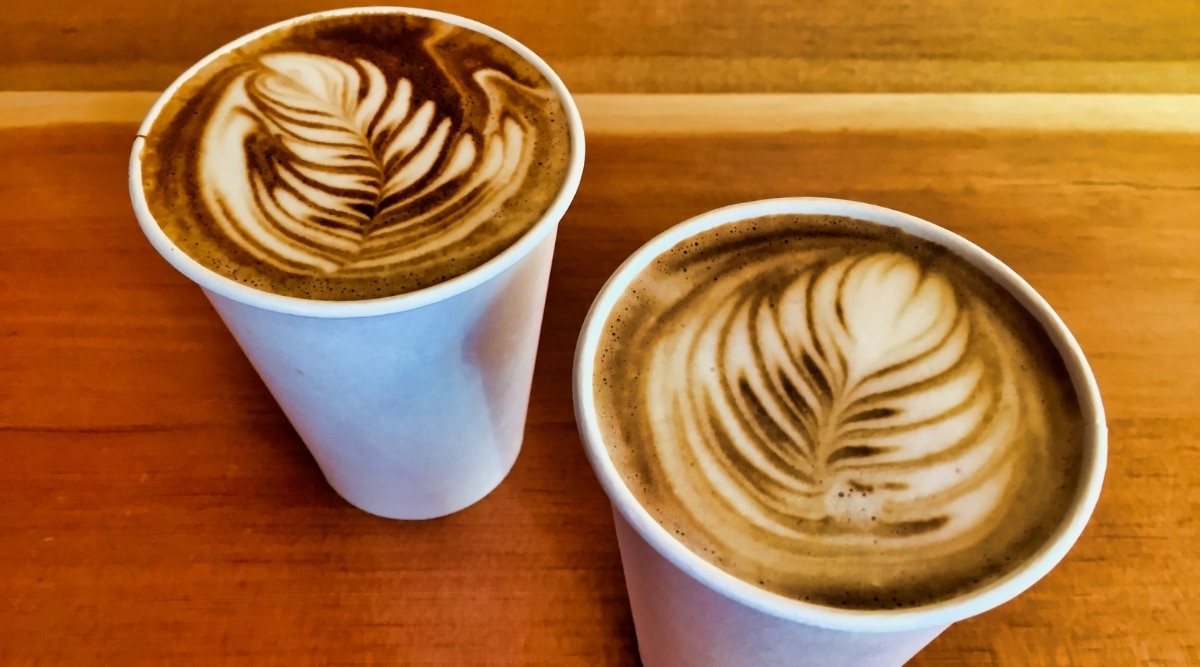Have you ever walked into a coffee shop and found yourself instantly overwhelmed? The menu is full of Italian terms that mean very little to the average English speaker. You might have questions like, what’s a latte? What’s a mocha? Is a mocha latte the same thing? Or is that something else entirely? What’s café mocha vs mocha latte? Read on as we review the differences between mocha vs latte.
It’s understandably confusing when there are literally hundreds of espresso and milk variations. Plus, the terms change depending on where you are in the world. So, there’s no shame in not knowing what makes each of these drinks different.
Below, we review the differences between mocha and latte so that you’re never confused by a café menu again. We’ll talk about the origins of the two drinks, standard preparations, and see how they stack up compared to other coffee shop classics like cappuccinos and macchiatos.
So if you’ve ever wondered about cafe mochas vs. mocha lattes, you’ve come to the right place. Grab a cup of joe, or dare we say, a latte, and read on. The differences between mocha vs latte is about to become a little more obvious.
Contents
What is Latte?
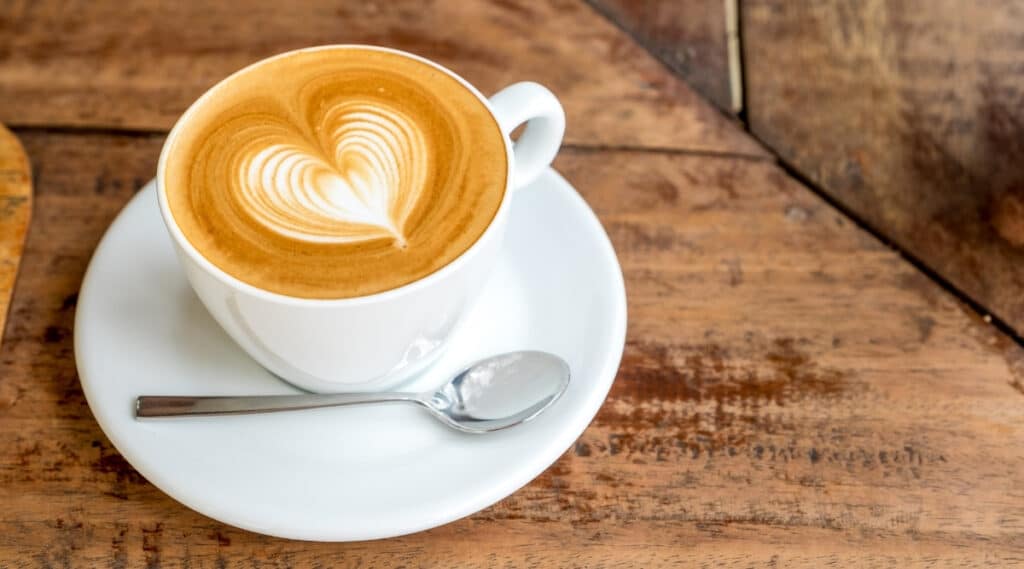
Technically speaking, you wouldn’t use just any coffee to make a latte, nor would you pour in milk straight from the fridge. Lattes require espresso and steamed milk, usually with a foamy milk topper.
Latte Origins
Lattes have been around since at least the 17th century when Europeans began pouring fresh milk into their morning cups of joe. The practice was confined to people’s homes for quite some time, though. There’s next to no mention of the name cafe latte or latte on public coffee house menus until the 20th century!
Though we use the Italian term cafe latte regularly in American coffee houses, other parts of Europe use different names for the drink. In some areas of Europe, like Scandinavia, you’ll hear it called cafe au lait, a french term. However, the French themselves tend to call the drink cafe creme.
In the U.S., we almost always shorten the drink’s name to “latte.” So, it’s good to note that latte directly translates to milk, not coffee. If you order a latte in Italy, your server will present you with a cold glass of cow’s milk rather than your favorite caffeinated beverage.
How to Make a Latte
Making lattes at home is a time-honored tradition. It’s still the most popular way of enjoying one in Italy, and many cafes won’t even mention a regular cafe latte on their menus.
Italians traditionally brew their cafe lattes using espresso beans in Moka pots on their stovetops at home. They add the rich brewed espresso to a cup containing warm milk and enjoy it along with breakfast.
If you want to get in on the practice of a morning latte at home, it’s not hard. The standard measurements for a cafe latte are:
- Two espresso shots (2 oz.)
- ¾ cup steamed milk (6 oz.)
- Additional foamed milk for topping
Combine all the elements in an 8 oz mug, and enjoy! For a milder beverage, you can serve a single shot of espresso rather than a double. You can also add sugar if you’d like. In the U.S., it’s common to add a teaspoon of sugar or two, and many coffee shops include it as a standard.
What Is Mocha?
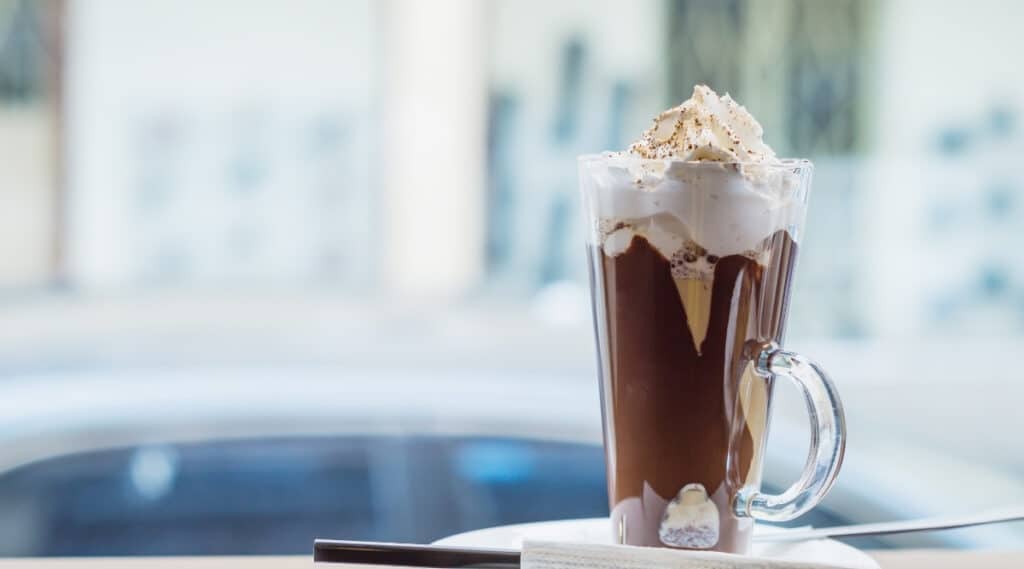
In the U.S., you might see the term mocha listed on a coffee shop menu. It’s really short for café mocha. Just like a café latte, baristas prepare café mochas by mixing espresso and steamed milk. To get the chocolate flavor, they also add cocoa powder and some form of sweetener.
Mocha Origins
The term “mocha” originates from the city of Mocha in Yemen. Mocha, which sits on the Red Sea, was a bustling port city throughout the 17th century. Their main export was a particular type of bean–the mocha, or Moka coffee bean.
Mocha became synonymous with coffee during the 17th century as the Moka beans traveled with spice traders from Yemen throughout Europe, but the beans didn’t have ties to chocolate quite yet.
Ironically, mocha beans were not grown in mocha. They came from the surrounding mountains and were easily recognizable thanks to their distinct look and taste.
Mocha beans are members of the Arabica family. Arabica beans are less bitter but more caffeinated than the alternative Robusta beans, and mocha beans, in particular, are valued for their smooth flavors.
Unlike their other Arabica cousins, mocha beans have a yellow-green hue and extra-oily composition that 17th-century spice traders adored. They brought them to Europe, where locals prized them for their rich, earthy undertones and declared their flavor was similar to chocolate.
Perhaps it was the chocolate-like flavors in the mocha beans that inspired Italians in Piedmont, Italy, to begin adding hot chocolate to their cafe lattes a few centuries ago. Italian hot chocolate, by the way, is not like the thin, watery American version. It’s thick and rich; adding it to coffee creates the cafe mocha we expect from coffee shops today.
How to Make a Mocha Latte
How you make a mocha is a matter of personal preference. There are several different ways to do it, but the basic principles are the same as a latte. You start by brewing espresso, and you’ll need steamed milk.
What you use for the chocolate component, though, can vary widely. Some use cocoa powder with sugar. Others prefer chocolate syrup, and then there are those who insist on crushing real chocolate bars into the glass.
In general, baristas leave off the foamed milk topper they may include in a cafe latte. With a mocha, they’re more likely to add whipped cream to complete the drink.
If you’re looking for a basic mocha latte recipe, we suggest using the following ratio:
- Two shots of espresso (2 oz)
- 2 oz of chocolate syrup or crushed chocolate
- 1 oz steamed milk
- Whipped cream to top (optional)
Variations on mocha lattes are plentiful. You can make a white mocha by substituting white chocolate for milk chocolate. Or, you could make a black and white by mixing white and dark chocolate pieces.
Which Is Stronger, Mocha Or Latte?
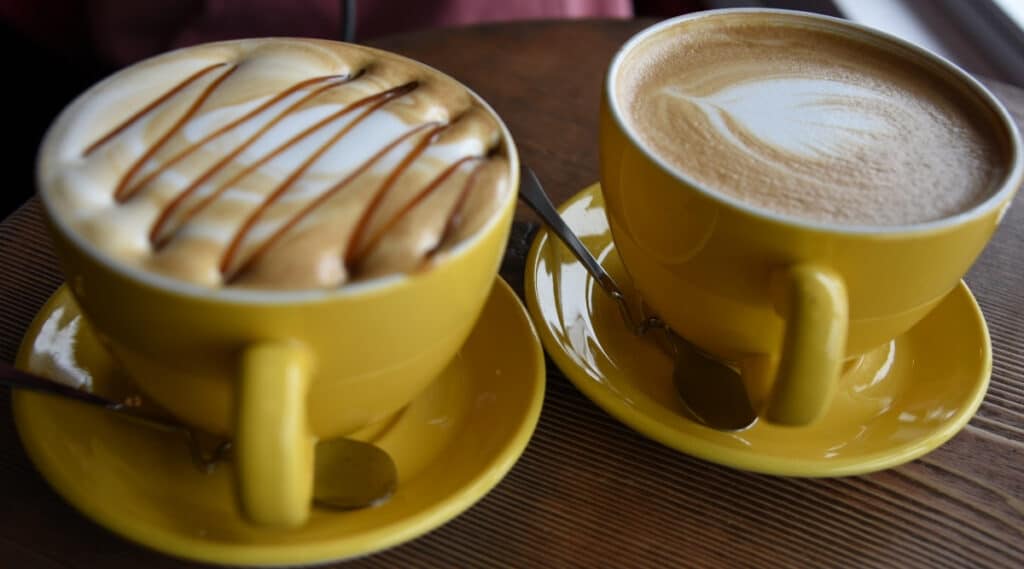
In general, mochas are stronger than lattes. That’s because mochas have less steamed milk for each espresso shot.
Lattes can have milk to espresso ratios as high as 9:1. Admittedly, that’s a very dilute latte, but it’s not unheard of.
Mochas put the focus on the espresso and the added chocolate, with just a splash of steamed milk. Chocolate adds richness and sweetness, but it also adds bitterness and caffeine. By adding chocolate and reducing the amount of milk, mochas become the more potent drink.
However, how strong your mocha or latte turns out is a matter of personal preference. If you’re brewing your drink at home, feel free to experiment with the milk to espresso ratio.
Café Mocha Vs Mocha Latte
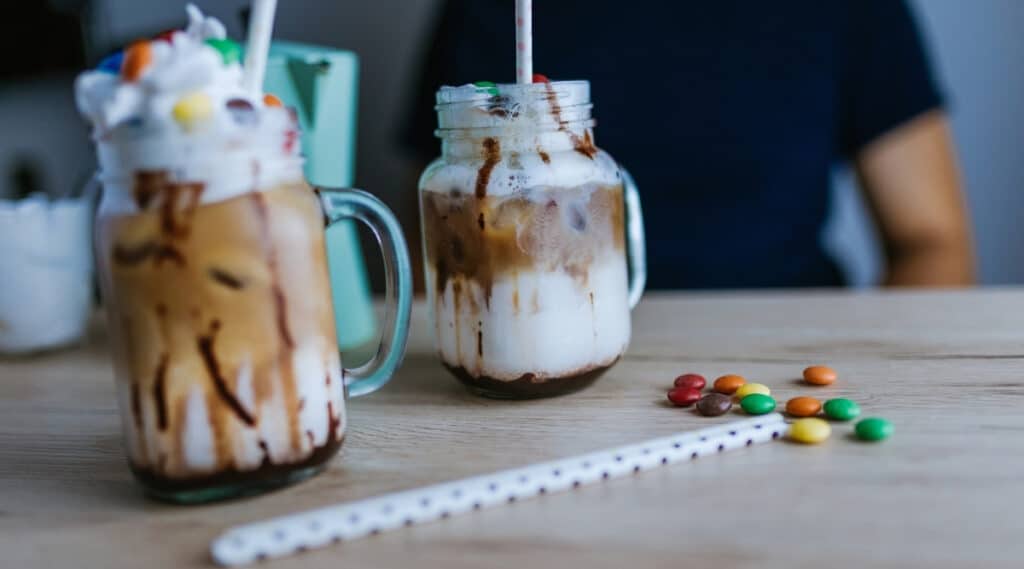
Many cafes and coffee shops serve café lattes loaded with extra sugar or sweeteners, which could lead your latte to rival a mocha in terms of sweetness. However, traditional preparations include no sugar whatsoever.
Remember, lattes are a traditional breakfast drink. Meanwhile, mochas are supposed to be a treat!
Is a Mocha or Latte Stronger than Regular Coffee?
Mochas and lattes are typically not as strong as a regular cup of java. That might seem counterintuitive because most of us know espresso has more caffeine than standard coffee.
Here’s the thing, espresso has more caffeine than regular coffee per ounce. One ounce of espresso has a whopping 63 mg of caffeine! Meanwhile, one ounce of regular coffee has only 12-16 mg.
However, no one drinks a single ounce of regular brewed coffee; drinking a single ounce of espresso is commonplace.
When you’re looking at a latte vs. regular coffee, regular coffee wins in terms of strength. A typical 8 oz glass of coffee has around 96 mg of caffeine. A single shot latte has only 63 mg.
Of course, the latte from your local coffee shop probably includes a double shot of espresso. In that case, your latte tops a standard cup of joe in terms of caffeine content. A mocha will have even more caffeine thanks to the added chocolate.
Is a Mochaccino the Same as a Mocha?
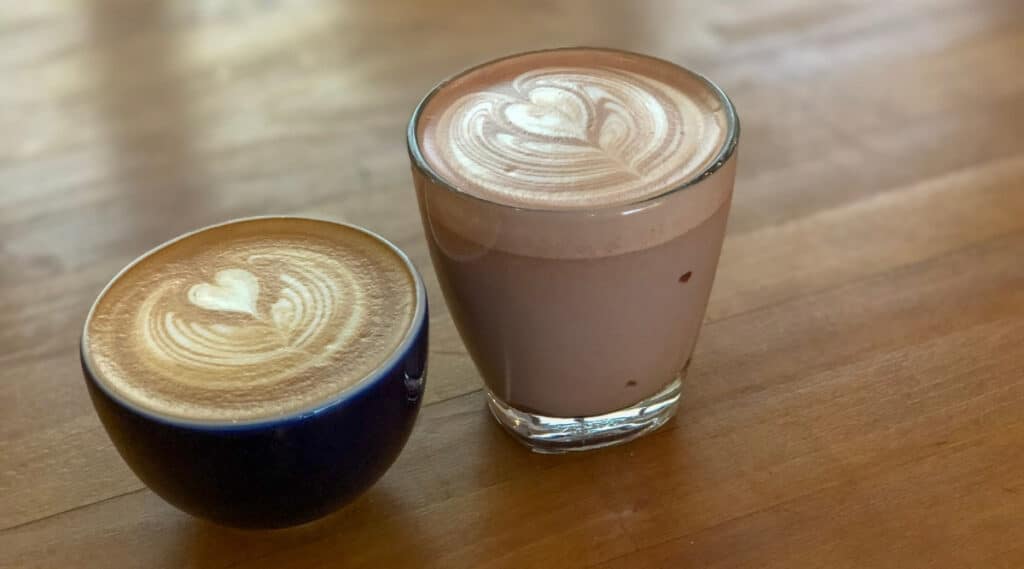
Most people and coffee shops use the terms mocha and mochaccino interchangeably. However, there may be slight differences, depending on your locale.
You typically make a mocha by mixing espresso, steamed milk, and chocolate. Some argue that you make a mochaccino mixing espresso and hot chocolate. It’s a subtle difference, but it does, technically, exist.
Other coffee shops state that a mocha is a large, latte-sized beverage, while a mochaccino is a smaller, cappuccino-sized beverage. Essentially, the ratio of milk to espresso will be greater in the latte-sized rendition.
If you’re ever unsure, there’s no shame in asking the barista what, exactly, “mochaccino” means on their menu. Given that different areas of the world use the term differently, it’s worth gaining clarification. A cappuccino-like variation will be much stronger than a typical mocha latte, which may be a disappointment if you want something light and creamy.
Mochas and Lattes vs Macchiatos

Macchiato is essentially espresso with a little bit of milk, far less milk than what you would add to a mocha or latte.
In the U.S., many coffee houses misuse the term macchiato. What they label a macchiato is actually a latte or mocha latte with added sugar and flavorings.
There’s a fairly easy way to tell a real-deal macchiato from its latte siblings. Macchiatos contain only one shot of espresso and a tiny bit of milk. So if you order one, it will likely come in a tiny glass. If it comes in a standard, American, 8-oz mug, it’s probably a latte with the wrong name tag.
Latte Macchiatos
There is such a thing as a latte macchiato which will come in a larger glass. Latte macchiatos refer to a macchiato with extra steamed milk.
Baristas always add the steamed milk to the glass first with a latte macchiato, then pour the espresso on top. They might complete the drink with additional foamed milk. This creates a layered effect that looks gorgeous in a transparent cup.
Mochas and Lattes vs. Cappuccinos
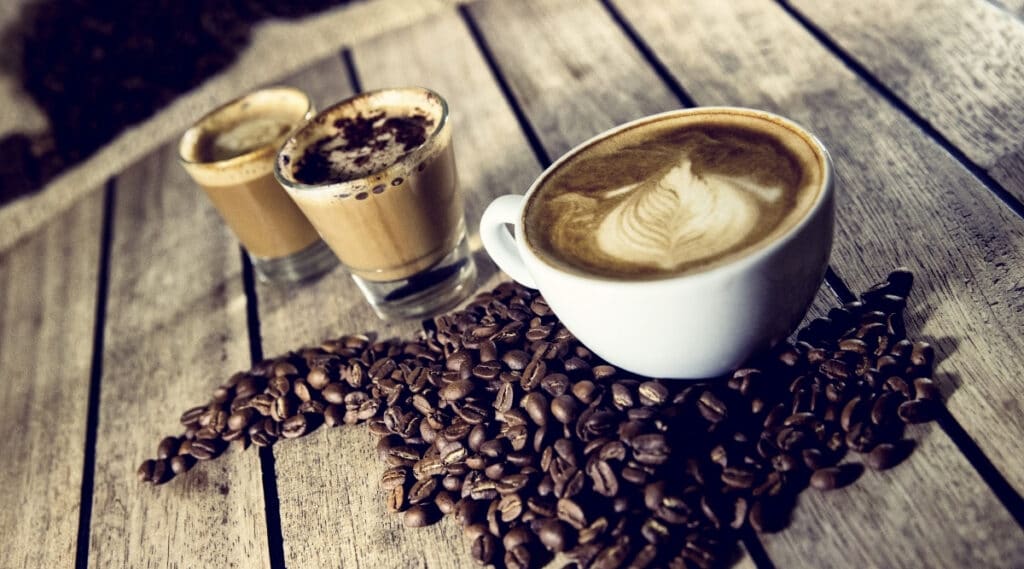
The difference between mochas and lattes vs. cappuccinos comes down to ratio. Cappuccinos stick to a strict ratio of ⅓ espresso, ⅓ steamed milk, and ⅓ foamed milk topping. Lattes and mochas use more milk, or in the case of mochas, chocolate.
Cappuccinos are strong, and those who love them seek out their coffee-forward flavor. Lattes, on the other hand, tend to be creamy and light. Mochas are creamy, too, with the added sweetness of chocolate.
Final Thoughts
Learning the difference between a latte and a mocha isn’t hard. One relies on espresso and steamed milk alone; the other uses chocolate in some form.
What makes mochas and lattes confusing has more to do with local coffee shop menus than anything else. What one cafe calls a “mocha latte” might be listed as a “mocha” down the street, which is understandably confusing.
It gets even more muddled when American coffee shops label their flavored lattes and macchiatos or call their mocha lattes mochaccinos! It also doesn’t help that a cafe latte can also be called a cafe au lait or cafe creme.
Hopefully, this review of the differences between cafe mochas vs. lattes helps set things straight. Baristas make lattes with steamed milk, espresso, and foam. They make mochas by replacing some of the milk in the latte recipe with chocolate of some sort.
Next time you’re at your local coffee shop, the menu should be a little easier to navigate, but if worse comes to worst, you can always ask your barista how each drink is made!
